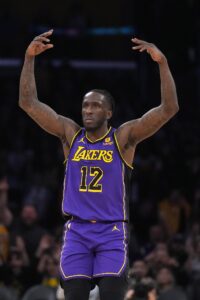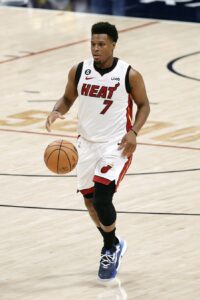When we checked in on the Western Conference playoff race on Sunday, the main takeaway was how wide open the conference looks, with several teams bunched together at the top of the West and a handful of playoff-tested clubs (and stars) lurking further down the standings.
Over in the East, the picture looks a little different. Whereas several teams have a legitimate case to be considered best in the West, it’s hard to argue that any team besides Boston deserves that honor in the East.
Entering play on Tuesday, the Celtics‘ 45-12 record gives them a 7.5-game cushion on their next-closest competitor in the Eastern standings. Their home record of 26-3 record is the best in the NBA, as is their 19-9 mark on the road. The Celtics haven’t lost in nearly four weeks and will put an eight-game winning streak on the line on Tuesday vs. Philadelphia.
Boston has been led by a dominant top six of Jayson Tatum, Jaylen Brown, Kristaps Porzingis, Jrue Holiday, Derrick White, and Al Horford. The team’s top eight most-used lineups feature some combinations of those players and/or Sam Hauser, and seven of those eight lineups have net ratings of +11.7 or higher. The Celtics’ overall net rating of +10.5 is more than five points per 100 possessions better than any other team in the East.
The question in the East then isn’t “Which team will emerge in a wide-open field?” but rather “Which team has the best chance to take down the Celtics?” Currently, betting site BetOnline.ag has Boston as the +100 favorite to come out of the East, essentially giving the C’s even odds against the field.
For now, the “field” is led by the Cavaliers (37-19), who have come on strong after a sluggish start and have won 19 of their past 23 games (despite losing two of their past five). Cleveland was eliminated in the first round of the playoffs last season, but has loftier aspirations this spring in Donovan Mitchell‘s second year as a Cav. They have the East’s second-best net rating at +5.4.
It has been a shaky season in Milwaukee, where the Bucks replaced their head coach midway through his first season with the team, but any club with Giannis Antetokounmpo and Damian Lillard on its roster – along with several more players who were part of a championship team in 2021 – has to be taken seriously. Despite their ups and downs, the Bucks hold the No. 3 seed with a strong 37-21 record and are considered by BetOnline.ag to be the second-best bet to come out of the East (+300).
The Knicks (35-23) have been hit hard lately by injuries, but they looked like one of the best teams in the conference when they were (nearly) fully healthy in January. If Julius Randle and OG Anunoby are back on the court to team up with Jalen Brunson and a solid cast of supporting players, New York has a chance to make some real noise in the postseason.
At Nos. 5 and 6 in the East, the Sixers (33-24) and Heat (32-25) are intriguing dark horses. Philadelphia needs Joel Embiid to get healthy before the playoffs begin, while Miami will need to recapture the magic that saw the team make an NBA Finals run last spring after initially needing a play-in win to claim the No. 8 seed.
It’s hard to imagine any team further down in the Eastern standings – including the Pacers (33-26), Magic (32-26), Bulls (27-30), and Hawks (25-32) – making a Heat-esque run in this year’s postseason due to their relative lack of talent and/or postseason experience compared to the top teams in the conference. But at least a couple of those teams could cause problems for first-round opponents.
We want to know what you think. Are the Celtics coming out of the East this season or is there a team you feel confident can take them down? If not Boston, which club is representing the conference in the NBA Finals in June?
Head to the comment section to weigh in with your thoughts and predictions on the Eastern Conference playoff race!
 Three teams
Three teams  The NBA’s buyout market has been active since the trade deadline and could feature several more moves in the next couple weeks.
The NBA’s buyout market has been active since the trade deadline and could feature several more moves in the next couple weeks.